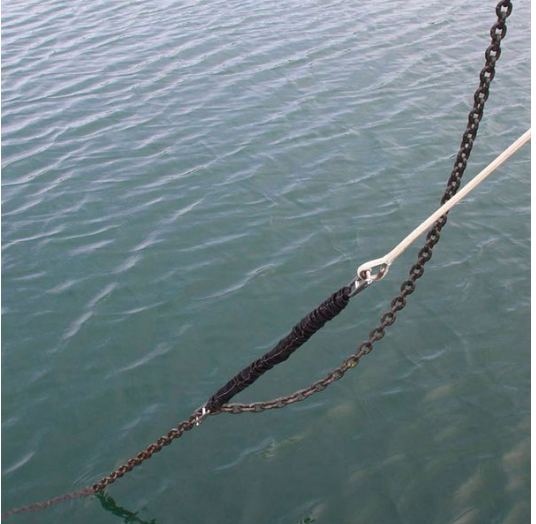Anchor snubbers, generally a length of nylon line, are meant to reduce shocks on your anchoring system. After the anchor is set, one end of the snubber is hooked in the chain between the boat and the water surface, and the other end is made fast to a strong point on deck. It is not attached to the windlass, which is a weak point, but preferably to a cleat or other strong point. After the snubber is attached, the tension is slacked so that the load is carried by the stretchable snubber.
Most snubbers are made with three-strand nylon, which provides a lot of elasticity; indeed, nylon stretches about 40 percent to its breaking point. But even that amount of stretching is a judgment call; if the snubber doesn’t have enough stretch, it won’t absorb enough energy to cushion the boat from shock loads. If it has too much stretch, it won’t work either.
But the main question is, how long should the snubber be? To find out, Practical Sailor did some testing. It found that short snubbers, less than one-quarter of the boat length, were more prone to fatigue and failure in heavy conditions.
Long snubbers, 20 feet or more, allowed for more stretching, and they reduced peak loads in a storm by 50 or 70 percent. And longer is better, even up to 1.3 times the boat length. The test also showed that nylon-plait snubbers or nylon double-braid snubbers performed better than the traditional three-strand nylon. Read more:




